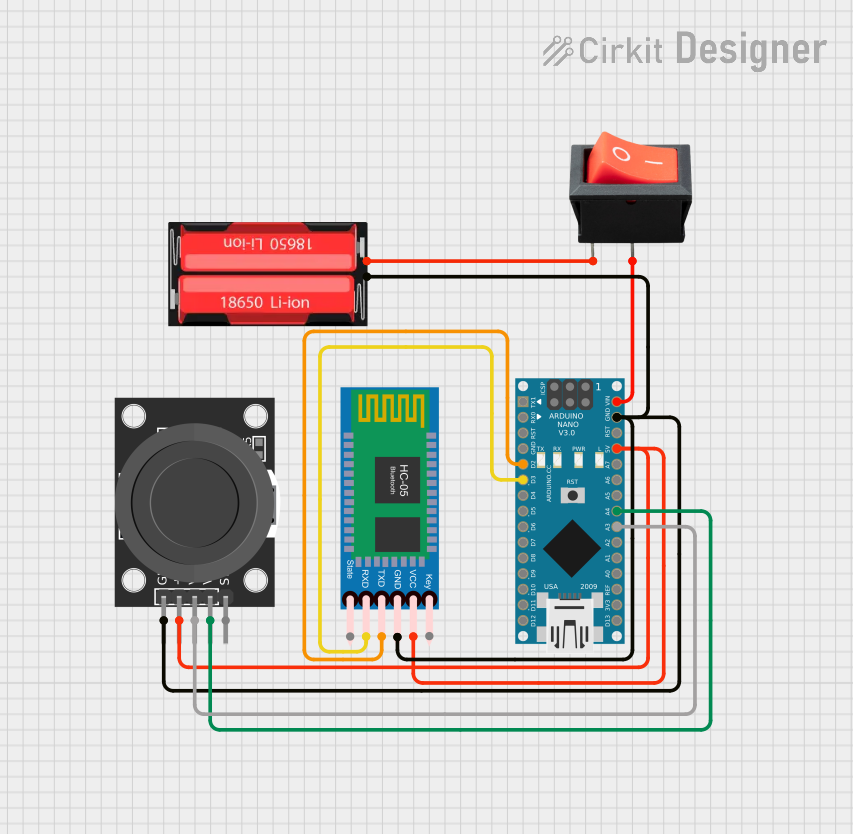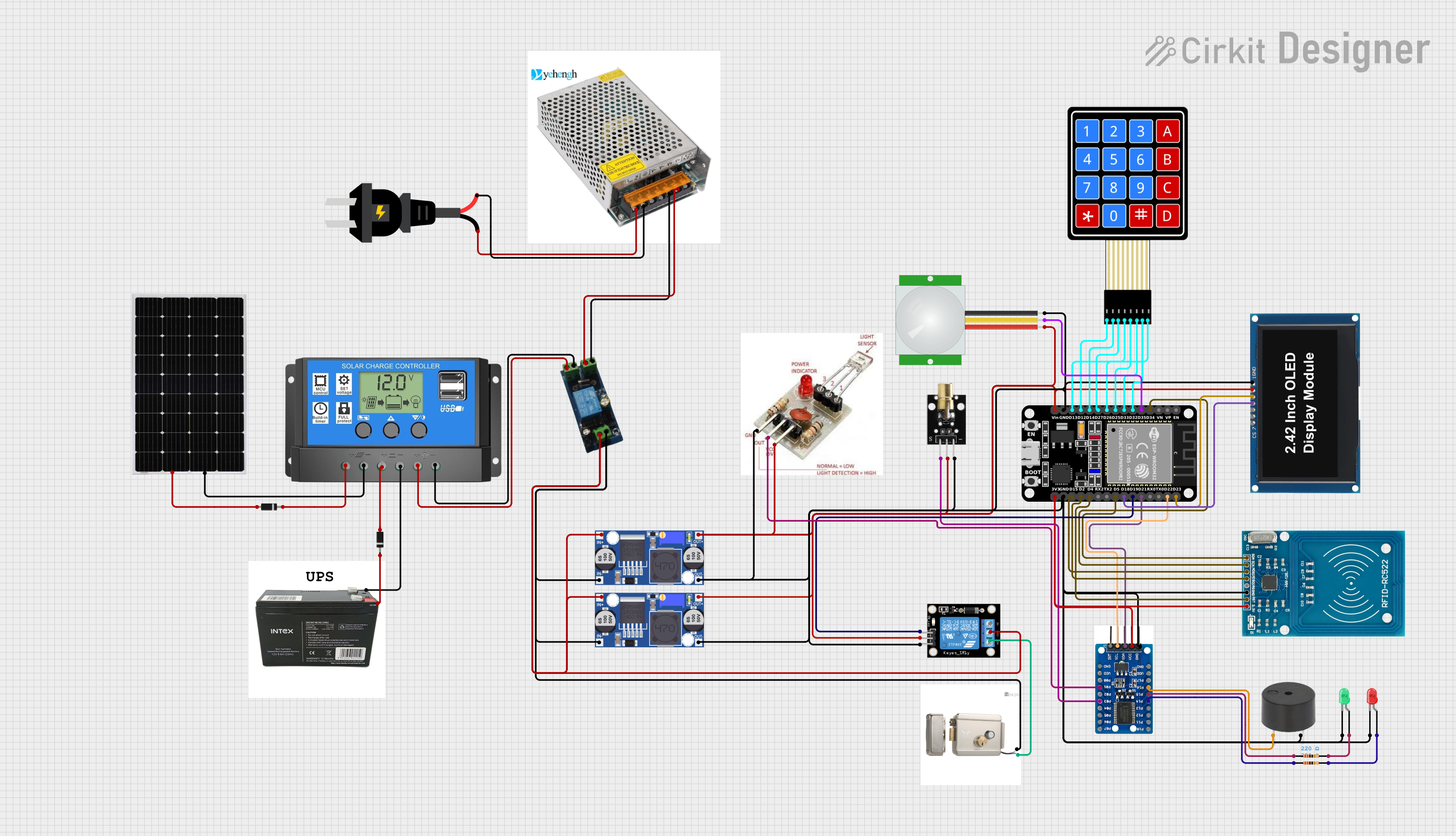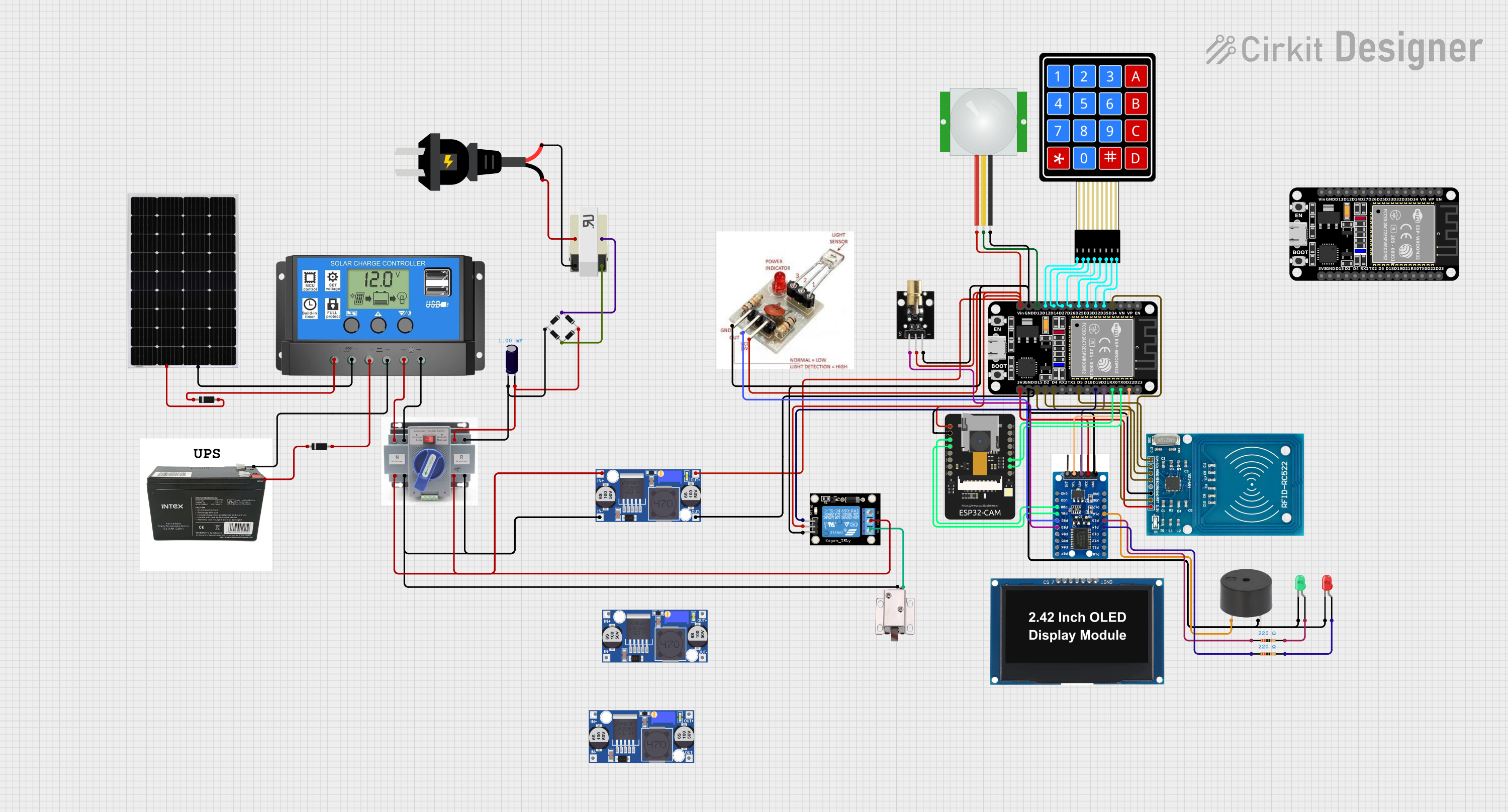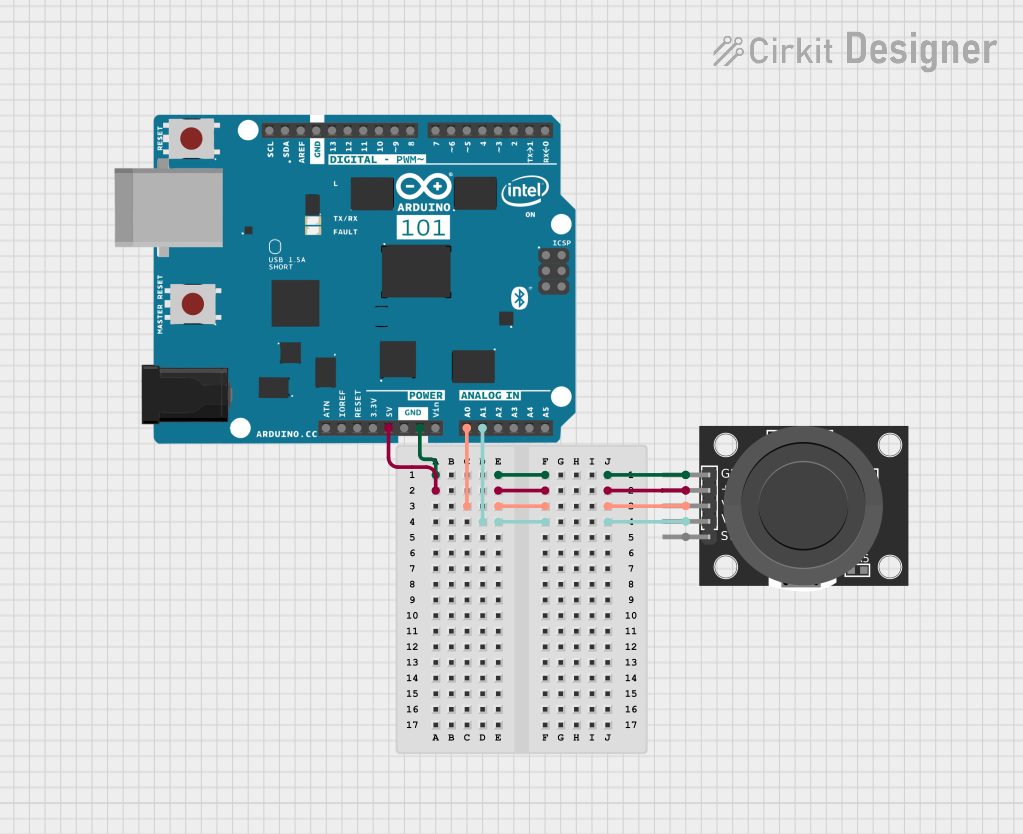
How to Use KY-033: Examples, Pinouts, and Specs

 Design with KY-033 in Cirkit Designer
Design with KY-033 in Cirkit DesignerIntroduction
The KY-033 is an infrared (IR) obstacle avoidance sensor module designed to detect the presence of nearby objects using infrared light. It features an IR transmitter and receiver that work together to measure distance and identify obstacles in its path. This module is widely used in robotics, automation, and other projects requiring object detection or proximity sensing.
Explore Projects Built with KY-033

 Open Project in Cirkit Designer
Open Project in Cirkit Designer
 Open Project in Cirkit Designer
Open Project in Cirkit Designer
 Open Project in Cirkit Designer
Open Project in Cirkit Designer
 Open Project in Cirkit Designer
Open Project in Cirkit DesignerExplore Projects Built with KY-033

 Open Project in Cirkit Designer
Open Project in Cirkit Designer
 Open Project in Cirkit Designer
Open Project in Cirkit Designer
 Open Project in Cirkit Designer
Open Project in Cirkit Designer
 Open Project in Cirkit Designer
Open Project in Cirkit DesignerCommon Applications
- Obstacle detection in robotics
- Line-following robots
- Automation systems
- Proximity sensing in smart devices
- Object detection in conveyor belts or industrial systems
Technical Specifications
The KY-033 module is compact and easy to integrate into various projects. Below are its key technical details:
| Parameter | Value |
|---|---|
| Operating Voltage | 3.3V to 5V |
| Operating Current | 20mA (typical) |
| Detection Range | 2cm to 30cm (adjustable) |
| Detection Angle | 35° |
| Output Type | Digital (High/Low) |
| Adjustment | Potentiometer for sensitivity |
| Dimensions | 3.2cm x 1.4cm x 0.7cm |
Pin Configuration
The KY-033 module has three pins for easy interfacing:
| Pin | Name | Description |
|---|---|---|
| 1 | VCC | Power supply pin. Connect to 3.3V or 5V. |
| 2 | GND | Ground pin. Connect to the ground of the circuit. |
| 3 | OUT | Digital output pin. Outputs HIGH (1) when no obstacle is detected, LOW (0) when an obstacle is detected. |
Usage Instructions
The KY-033 is simple to use and can be connected to microcontrollers like the Arduino UNO for obstacle detection. Follow the steps below to integrate the module into your project:
Connecting the KY-033 to an Arduino UNO
Wiring:
- Connect the
VCCpin of the KY-033 to the 5V pin on the Arduino. - Connect the
GNDpin of the KY-033 to the GND pin on the Arduino. - Connect the
OUTpin of the KY-033 to a digital input pin on the Arduino (e.g., D2).
- Connect the
Adjust Sensitivity:
- Use the onboard potentiometer to adjust the sensitivity of the sensor. Turn it clockwise to increase sensitivity or counterclockwise to decrease it.
Arduino Code: Below is an example Arduino sketch to read the KY-033 sensor output and display the status in the Serial Monitor:
// KY-033 Obstacle Avoidance Sensor Example // Connect OUT pin to Arduino digital pin 2 const int sensorPin = 2; // KY-033 OUT pin connected to digital pin 2 int sensorState = 0; // Variable to store sensor state void setup() { pinMode(sensorPin, INPUT); // Set sensor pin as input Serial.begin(9600); // Initialize Serial Monitor at 9600 baud } void loop() { sensorState = digitalRead(sensorPin); // Read the sensor output if (sensorState == LOW) { // Obstacle detected Serial.println("Obstacle detected!"); } else { // No obstacle Serial.println("No obstacle."); } delay(500); // Wait for 500ms before reading again }
Important Considerations
- Power Supply: Ensure the module is powered with a stable 3.3V or 5V supply.
- Ambient Light: The sensor may be affected by strong ambient light. Use it in controlled lighting conditions for best results.
- Distance Adjustment: Use the onboard potentiometer to fine-tune the detection range based on your application.
- Mounting: Position the sensor so that the IR transmitter and receiver face the area to be monitored.
Troubleshooting and FAQs
Common Issues and Solutions
The sensor does not detect obstacles:
- Check the wiring and ensure all connections are secure.
- Verify that the power supply voltage is within the specified range (3.3V to 5V).
- Adjust the potentiometer to increase sensitivity.
False detections or inconsistent readings:
- Ensure the sensor is not exposed to strong ambient light or IR interference.
- Verify that the sensor is mounted securely and not vibrating.
Output pin always HIGH or LOW:
- Check for obstacles within the detection range.
- Inspect the sensor for physical damage or dirt on the IR transmitter/receiver.
FAQs
Q: Can the KY-033 detect transparent objects?
A: The KY-033 may have difficulty detecting transparent or highly reflective objects due to the way infrared light interacts with such surfaces.
Q: Can I use the KY-033 with a 3.3V microcontroller?
A: Yes, the KY-033 is compatible with both 3.3V and 5V systems. Ensure the VCC pin is connected to the appropriate voltage.
Q: How do I increase the detection range?
A: Use the onboard potentiometer to adjust the sensitivity. Turning it clockwise increases the detection range.
Q: Can I use multiple KY-033 sensors in the same project?
A: Yes, but ensure each sensor is positioned to avoid interference from the others' IR signals.